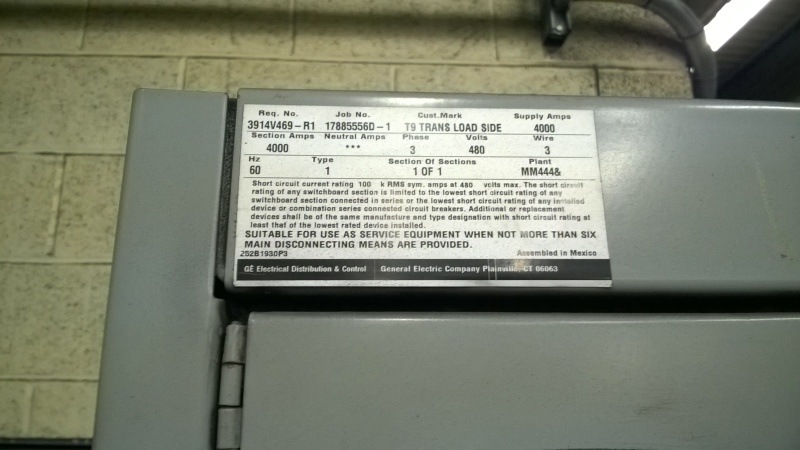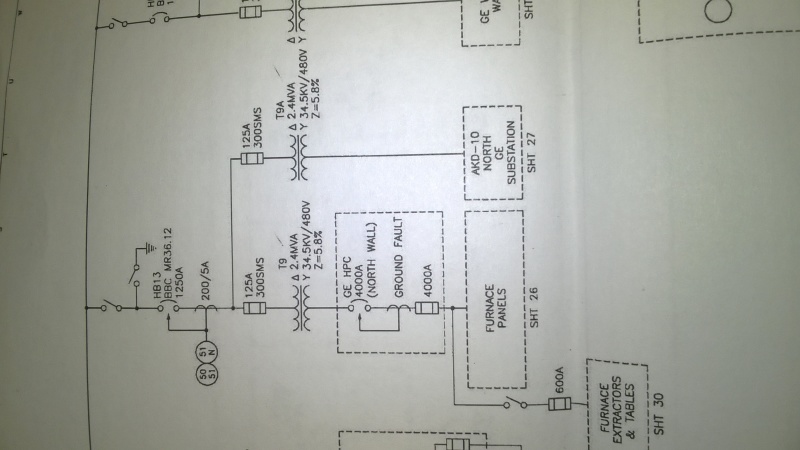1Millwright
Electrical
I just started as an electrical supervisor for a hot strip mill. On my first week we were coming up from an outage and a ground in a screw compressor motor tripped a 4000 amp breaker with GFI fault causing a loss of power in two entire departments.
This compressor is fed off a downstream load center but the older panel did have a chance to trip before the 4000 amp kicked. I want to prevent future nuisance trips and isolate the downstream issues. I have contacted the manufacture and they are looking up the build specs and going to see if they can recommend any add on equipment for our old load centers feeding off this main to catch the ground as close to the fault as we can.
The 4000 amp breaker is the main on the secondary of one of our transformers. It is a 3 wire 480 volt system and it looks like they created an earth ground there for the GFI. I will look into it further, but I believe that it is either a wye - delta or delta - delta step down transformer.
In the code book it looks like you only need the GFI on a wye (4 wire) system above 1000 amps. They make no mention of using it on a 3 wire system. Is there something that I am missing or is it possible we ordered the GFI version when it was not necessary/required?
If the GFI wouldn't have tripped the equipment breaker should have when there was a spike phase to ground. If not it then the main on that subpanel should have caught it.
Thanks for any help.
This compressor is fed off a downstream load center but the older panel did have a chance to trip before the 4000 amp kicked. I want to prevent future nuisance trips and isolate the downstream issues. I have contacted the manufacture and they are looking up the build specs and going to see if they can recommend any add on equipment for our old load centers feeding off this main to catch the ground as close to the fault as we can.
The 4000 amp breaker is the main on the secondary of one of our transformers. It is a 3 wire 480 volt system and it looks like they created an earth ground there for the GFI. I will look into it further, but I believe that it is either a wye - delta or delta - delta step down transformer.
In the code book it looks like you only need the GFI on a wye (4 wire) system above 1000 amps. They make no mention of using it on a 3 wire system. Is there something that I am missing or is it possible we ordered the GFI version when it was not necessary/required?
If the GFI wouldn't have tripped the equipment breaker should have when there was a spike phase to ground. If not it then the main on that subpanel should have caught it.
Thanks for any help.


